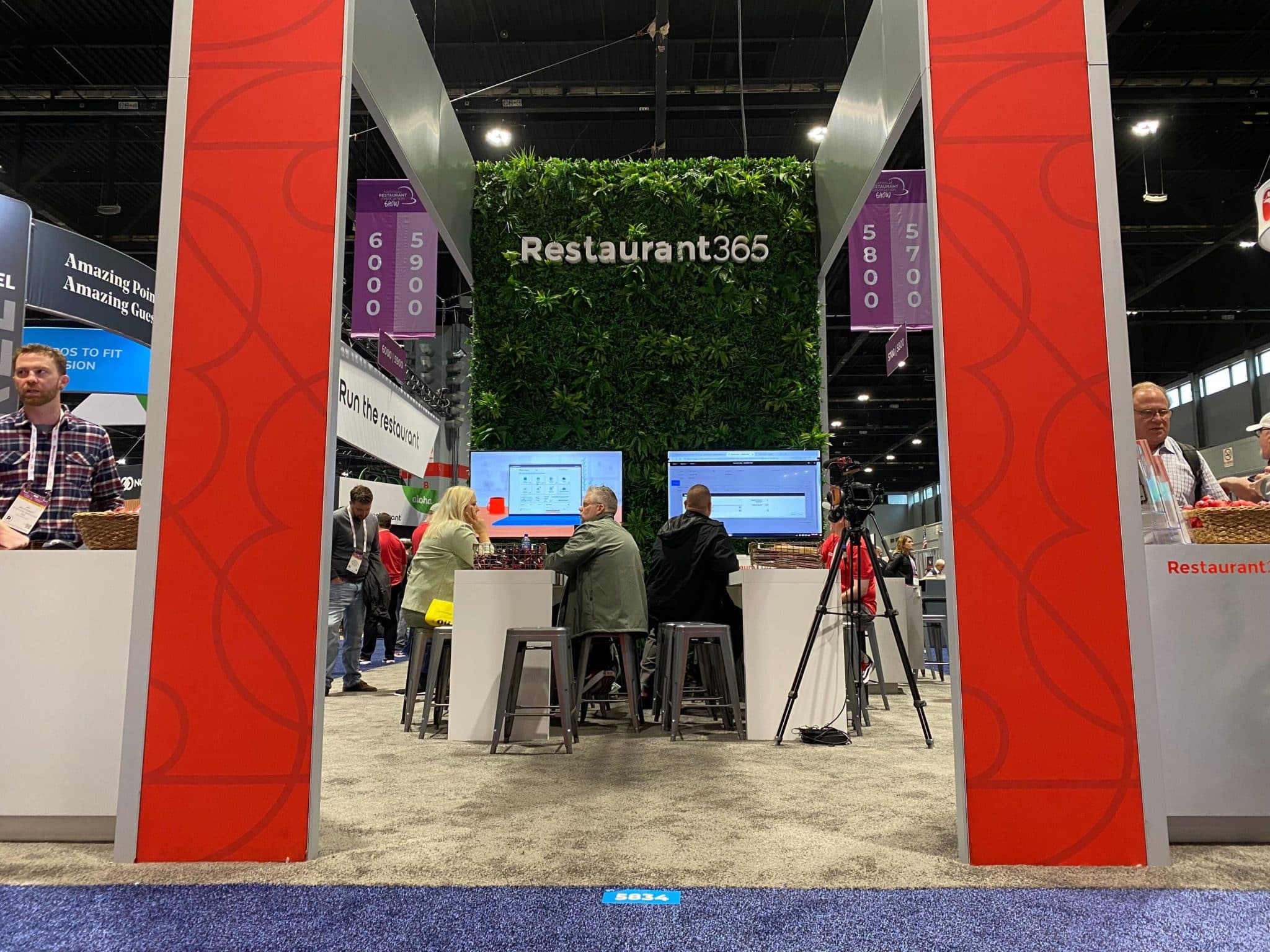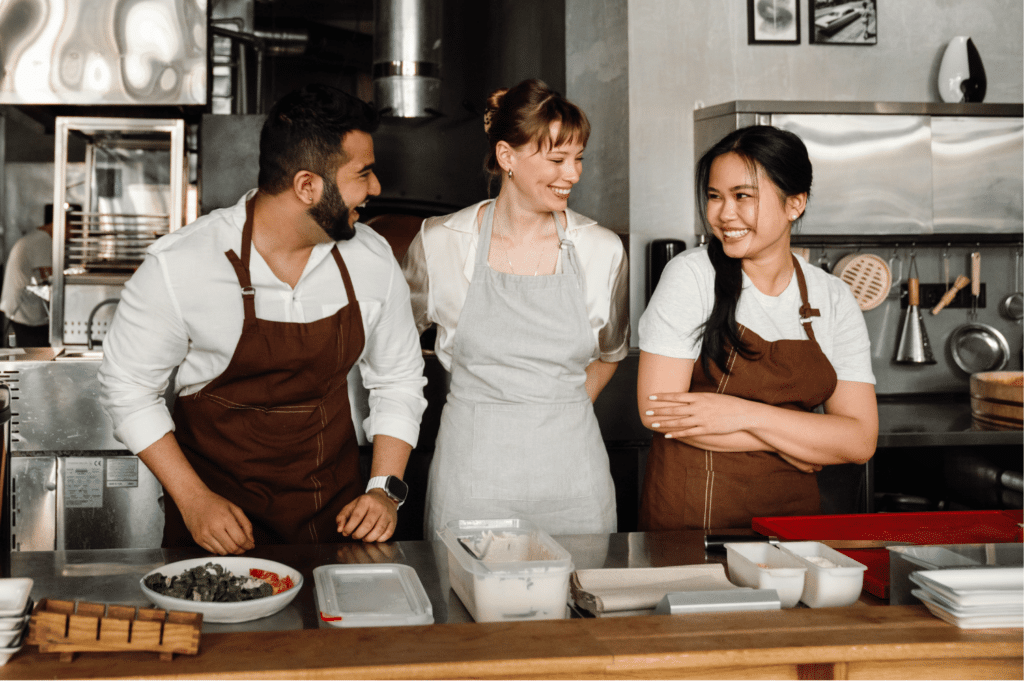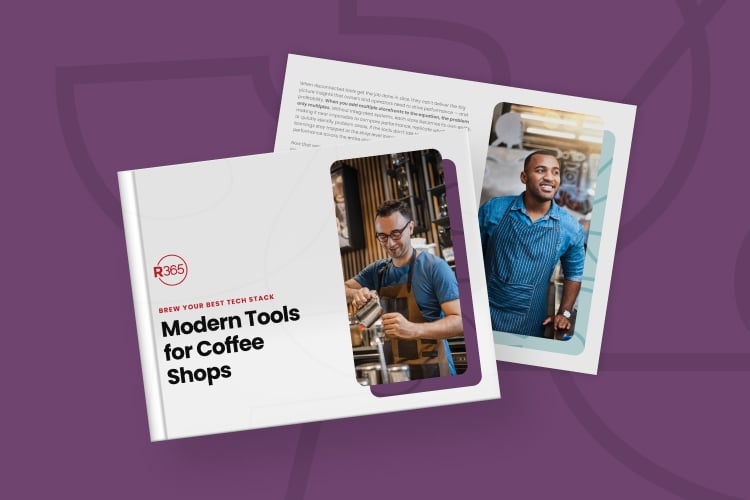After a two-year-long hiatus, the National Restaurant Association’s annual show finally reopened in Chicago’s sprawling McCormick Place. Thousands of buzzing attendees were on hand to eat, learn, and share their recent challenges and the creative ways they overcame them.
Familiar topics were perched on the crowd’s lips: inflation, rising food prices, the labor shortage, rolling waves of Covid. But there was also excitement as the NRA predicted restaurant sales this year to climb higher than ever, long-isolated colleagues had the chance to reconnect, and Nathan’s Famous kept the hot dogs coming throughout the four-day affair.
Of course, technology and how it might help the industry chart a new path forward was top of mind for many chefs, operators, and professionals.
“The pandemic forced our industry to accelerate the adoption of technology at a record pace, leaping the equivalent of four years forward,” said Mark Calvillo, Senior Vice President of Product at Restaurant365. “Our team took notice of how restaurant norms changed overnight, and we knew we had to keep pace by accelerating the advancement of our solutions. These latest innovations and enhancements will be of great value to our customers as they continue to optimize their post-pandemic operations.”
Below are a few of the things we tasted, quaffed, heard, and learned during what was sure to be a show for the record book.
10. Food, Glorious Food
Thanks to Polish sausage, Italian beef, and experimental kitchens at places like Alinea and Oriole, Chicago is one of the best eating cities in the United States. From May 21 to 24, the hundreds of thousands of square feet of floor space at McCormick Place joined the list. There were Chicago hot dogs courtesy of Vienna Beef, ice cream and all varieties of cheese from Wisconsin. Oven maker Rational dished out steamed bao buns filled with pulled pork and pickles alongside juicy turkey breast with mashed cauliflower. We tried toothsome, freshly extruded pasta courtesy of pasta machine maker Arcobaleno while coffee and tea distributor Tradecraft kept everyone caffeinated with perfect lattes and beautiful teas.
9. It’s All About Automation
After a couple of years of robots inching their way into all types of restaurants, they took NRA by storm. The show saw the global launch of SwiftBot from Pudu Robotics, boasting advanced navigation that can deliver dishes to tables even when restaurants are at their busiest and may offer some relief from the labor crunch. Nala Robotics pulled out the stops with a floor-mounted, robotic arm that appeared to do everything from shaking a wok to pulling French fries from hot oil and dusting them with seasoning, offering a peek at the “world’s first fully automated restaurant.”
8. Plant-Based Protein Power
The world’s growing focus on alternative protein sources was on full display. While Impossible Foods, with three-quarters of a billion dollars in funding and thousands of restaurant locations serving its products, remains the heavy hitter, plenty of other companies were on-hand showing off the versatility of the plant kingdom’s protein. The most interesting of which came from Israel’s Yo! Egg, which offered a soy and chickpea doppelganger that perfectly mimicked the real thing’s richness and runny yolk. Beyond Meat offered up samples of its Beyond Sausage while Morningstar Farms cooked up meat-free chorizo tacos, and Ocean Hugger served imitation eel made from eggplant and salmon made from carrots.
7. Recruit Your Team to Recruit
As restaurant owners and operators continue to cope with a historic labor shortage, Jill Waite, Chief Human Resources Officer for Portillo’s, pointed out that many companies already have a valuable resource: their existing employees. “Thirty percent of our employees came to work for us because they wanted to work with a friend or a family member; those employees serve almost like a walking billboard,” Waite said. “If you have the right culture in place, they’ll brag about it to a friend or family member.” Waite also added that bonuses are often part of the process but that restaurants can be creative about them and offer them in the form of an appropriate, personalized gift that, in her experience, has helped drive retention and “repeat” business from those who refer.
6. Communication is The Key
Staff can only get the word out about open positions if they know the positions are available in the first place. Patrick Yearout, Director of Innovation at Ivar’s, emphasized the benefits of consistent, genuine communication on the overall business. “I can’t say there’s anything more powerful for a current or prospective employee than seeing their peer tell their success story,” he said. “Today, especially, we need the stories of the people who’ve moved forward, taken on a challenge, and not just how they’ve moved up but how they made a real impact.” A robust communication platform that allows managers to share critical information with each other, with staff, and for the business to share exciting news enables those stories to take flight. That system also helps on the day-to-day with cases like special event promotions or recruiting assistance from one location for another that might be struggling with operations.
5. Driving Smart Margins
Jose Cil, CEO of Burger King, Popeye’s, and Tim Horton’s owner Restaurant Brands International Inc., led one of the most well-attended sessions of the show. He dove deep into how this sprawling multinational with a hanger of iconic brands used innovation and measured thinking to persevere through recent years. The first thing they did was avoid making knee-jerk price increases. “In our space, it’s hard to come back on pricing if you go too far,” Cil said. Customers can easily tell when restaurants enact broad brush price increases, and traffic and the bottom line often suffer further. “It’s better to take small steps and do so frequently rather than take one swoop to capture it all,” Cil added. He also suggested taking a step back and using data to identify which ingredients or items already have the largest margins and can offset pressure in other areas. “In difficult moments, you have to take the long view, which is to drive traffic to drive top-line to drive bottom line.”
4. Integration is the Future of Restaurant Technology
When an audience member asked Cil to discuss his technology and the future, he emphasized the need for a fully integrated restaurant management solution that distill data from the front of house into actionable insights with back of house systems similar to ones other industries use. “I think for us to move fast, especially in the United States, the most important thing is for all technology to be seamless and to have the ability to build a connection between front and back of the house,” Cil said. “That’s where I think there’s going to be a big shift if we’re going to make any progress on technology.”
3. How to Power Smarter Work
Technology enables many in the restaurant industry to spend less time on simple, manual work and more time on high-level tasks that improve the guest experience and the bottom line. Take, for example, the simple, drink-delivering robots that allow servers to focus more on diners’ individual needs. At the store-manager level and above, technology and automation empower teams with near-instant insights into their labor and food costs to make data-driven decisions that improve margins. Technology also reduces bank reconciliations and period closings from weeks to hours, enhances communication to ensure no detail is overlooked, and to recruit and hire with ease so the focus can be on staff retention and development. “All of this automation and technology has made our people better, smarter, and stronger because they’re not dealing with repetitive tasks,” said Sean Skuro, VP of Accounting and Finance at One Table Restaurant Brands. “We started with an accounts payable department with two people for 17 restaurants and errors. Today we’re two brands, 44 locations, one person, and no errors.”
2. Find Your Flywheel With Restaurant Technology
Restaurant365 Co-Founder and Chief Customer Advocate Morgan Harris shared the key to Amazon’s success with a packed audience: the flywheel. It starts with investment leading to customer benefits that then kickstarts a feedback loop that generates more investment, growth, and customer benefits. Restaurant365’s flywheel, Harris said, depends on the success of its customers’ flywheels. The key indicator that a restaurant’s flywheel is working and sustaining is a surfeit of positive feedback across many restaurant review websites. “As a precursor to a great customer experience, you have to offer a great employee experience; you have to have trained staff, tenured people, a great, competitive compensation structure, and positive culture, but growth is king,” Harris said. “If you take restaurant earnings and stick them in the bank or sip Mai Tais in Hawaii, you won’t get the power of a flywheel, but if you invest in your people, you’ll start reaping the rewards. This is the way the flywheel takes effect in a multi-unit restaurant business.”
1. Dave’s Hot Chicken is on Fire
Next came James McGehee, head of the financial services practice of Results Through Strategy, and a long-time restauranteur who’s found success across various brands, most recently with LA’s Dave’s Hot Chicken. How much success, you ask? Dave’s, which started as a small pop-up, had seven locations at the beginning of 2021. Today it has 65 locations in 15 states, with another 50 slated to open before the end of the year. “With franchise partners, we have a total of 700 units in the pipeline,” McGehee said. Dave’s started with a flywheel, powered in part by Restaurant365, to help drive its growth. McGehee and Dave’s used Restaurant365’s seamless integrations and data analysis capabilities to drive efficiency when chicken breast, which represented one-third of its spend, jumped from $1.50 to $3.29 per pound. Dave’s decided to purchase 100% of its stores’ ingredients to drive efficiencies. “The result was a 300 basis point improvement, even with upward cost pressures on cost of goods sold,” McGehee said. They even used the system to find vendor shortfalls worth $80,000 and redistributed those to franchisees. “The future of our industry is data, pulling it all together to expose our business in a usable format so everybody can run a great shift, shift to shift, week to week,” McGehee said. “What is the effectiveness of your company’s flywheel, and what areas can you work on?”
If you would like to easily track your inventory and gain insight into your restaurant operations, consider a comprehensive, restaurant-specific accounting and operations solution that includes inventory management software as part of the platform. With Restaurant365 you can save on food costs by adjusting in the moment, based on up-to-date information. Restaurant365 is a cloud-based restaurant management solution that also includes scheduling, payroll and HR financial reporting, operational reporting, and more.



